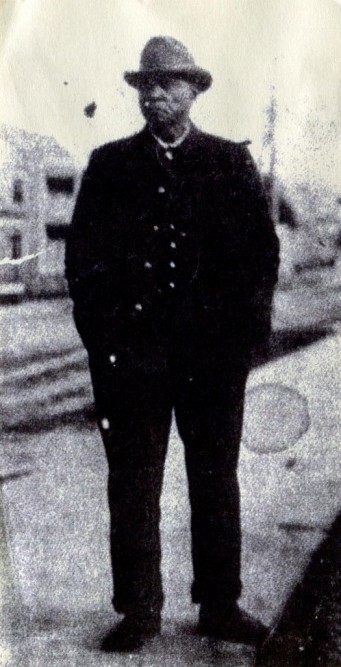
Deborah Jenkins-Lewis never met her great-grandfather, but she’s made it her life’s mission he be remembered for breaking through racial barriers in a tumultuous time in South Carolina’s history.
Jenkins-Lewis, 58, grew up hearing the stories about her grandfather’s father, Edmund Jenkins, an African-American veteran of the Civil War who was elected as Mount Pleasant’s first black town marshal.
Jenkins, who, according to his family, was born a slave in McClellanville, served the town of Mount Pleasant from the 1890s until the late 1920s, according to the Mount Pleasant Historical Commission. His tenure during the age of Jim Crow laws was rare, according to Jenkins-Lewis.
“My great-grandfather was an ordinary man who led an extraordinary life by virtue of the times he lived,” she said.
Damon L. Fordham, a South Carolina historian who wrote about Jenkins in his book, “True Stories of Black South Carolina,” said that based on the interviews he conducted, Jenkins kept order largely among the black community at that time.
“He was so well thought of that when he died in 1930, the newspaper published his obituary and referred to him as Mr. Jenkins, when such titles were not given to blacks during those days or even obituaries were written about them,” he said. “During that time, that was miraculous.”
Details about his life, however, are hard to come by nowadays. Little else has been written about Jenkins, who died on Dec. 26, 1930.
“There’s a lot of people not aware of it,” said Jenkins-Lewis.
People in the Lowcountry are surprised when they hear about Edmund Jenkins, according to Fordham.
“There are a lot of great heroes from that period that people are shocked to learn about,” he said. “Almost without exception, they are shocked to learn there were educated black people in those days. Students are always shocked to learn that.”
The town of Mount Pleasant erected a historical marker for Jenkins in 2006, while a public housing facility built in 1952 was also named the Edmund Jenkins Homes in his memory.
Jenkins-Lewis is grateful for the recognition, but she’s hungry for more. She wants her great-grandfather’s legacy engrained in the state’s history. She is currently advocating for street signage in honor of Edmund Jenkins and is determined to keep the memory of him alive.
“I’m not going to give up,” she said. “It’s very important for me to continue this move for the legacy of my family.”
Jenkins-Lewis lives in Chicago, where a movement to end racial injustice has recently taken center stage. She said she is disturbed by recent police shootings of black men around the country.
“It’s very disappointing. It’s heart-wrenching. I never dreamed of this. But so many times, justice has not prevailed for any of us,” she said. “Change has to come one day, and I’m not sure when the change comes if I’ll be living. Hopefully, I’ll be able to help with the change while I’m on this Earth.”
Fordham believes that valuable lessons can be learned by sharing the stories of Edmund Jenkins and others like him. She believes these lessons can help shape our country’s future.
“Once you get a better understanding of the past, you have a better understanding of your future,” he said.
Jenkins-Lewis, meanwhile, is confident that sharing the story of her great-grandfather’s bravery and determination to be equal among men will resonate today.
“I want them to know that in spite of what we are experiencing in the times today, change is very critical for the United States of America, and he was an example of that,” she said. “We must change. My great-grandfather led by example, in spite of what he had to endure.”
by Natalie Caula Hauff.
Photo courtesy of Deborah Jenkins-Lewis.

Wow!! I grew up in Edmund Jenkins housing in the 90’s and early 2000’s and I was not aware of the history until now. I want to thank you for keeping your grandfather’s legacy alive. I am in my 30’s now, and I will be forever grateful for having a place to live and grow. Thank you
Was born here and raised here living in a home my grandfather built on this land in the late 1930’s-1940’s